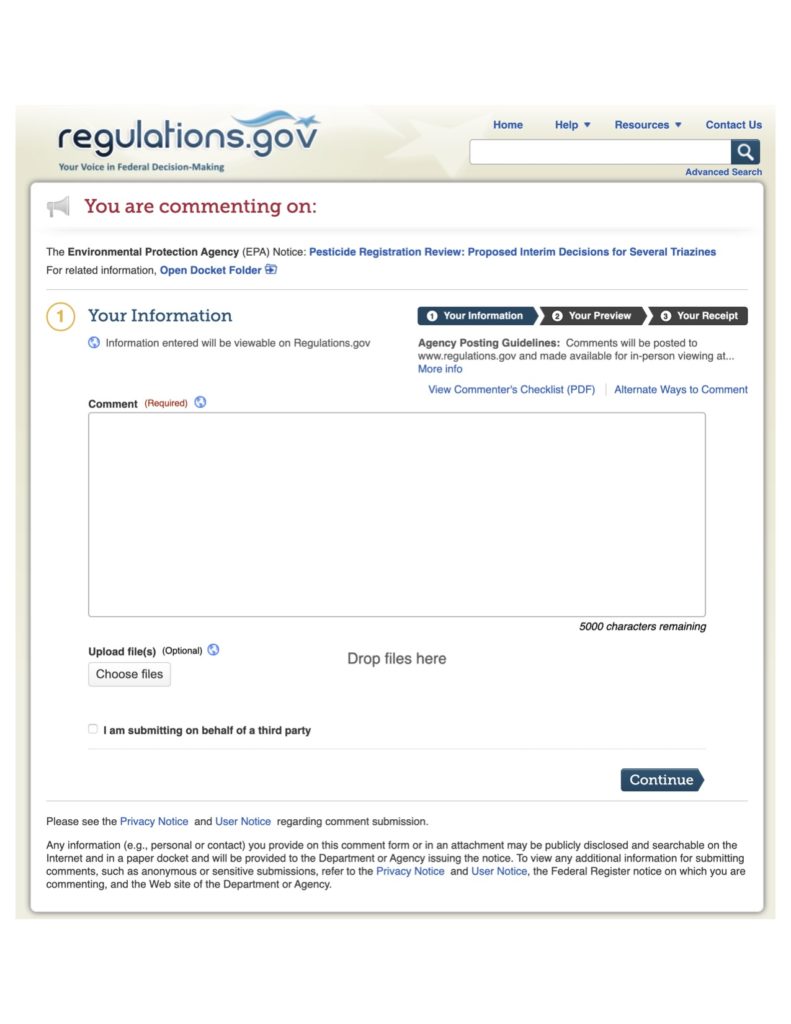Are Changes Coming for Atrazine and Simazine?
go.ncsu.edu/readext?647712
en Español / em Português
El inglés es el idioma de control de esta página. En la medida en que haya algún conflicto entre la traducción al inglés y la traducción, el inglés prevalece.
Al hacer clic en el enlace de traducción se activa un servicio de traducción gratuito para convertir la página al español. Al igual que con cualquier traducción por Internet, la conversión no es sensible al contexto y puede que no traduzca el texto en su significado original. NC State Extension no garantiza la exactitud del texto traducido. Por favor, tenga en cuenta que algunas aplicaciones y/o servicios pueden no funcionar como se espera cuando se traducen.
Português
Inglês é o idioma de controle desta página. Na medida que haja algum conflito entre o texto original em Inglês e a tradução, o Inglês prevalece.
Ao clicar no link de tradução, um serviço gratuito de tradução será ativado para converter a página para o Português. Como em qualquer tradução pela internet, a conversão não é sensivel ao contexto e pode não ocorrer a tradução para o significado orginal. O serviço de Extensão da Carolina do Norte (NC State Extension) não garante a exatidão do texto traduzido. Por favor, observe que algumas funções ou serviços podem não funcionar como esperado após a tradução.
English
English is the controlling language of this page. To the extent there is any conflict between the English text and the translation, English controls.
Clicking on the translation link activates a free translation service to convert the page to Spanish. As with any Internet translation, the conversion is not context-sensitive and may not translate the text to its original meaning. NC State Extension does not guarantee the accuracy of the translated text. Please note that some applications and/or services may not function as expected when translated.
Collapse ▲Background
Atrazine and simazine are triazine herbicides registered for pre- and post-emergent control of numerous broadleaf and grassy weeds in turfgrass systems (including sod production, golf courses, residential lawns, athletic fields, school grounds, parks, roadsides, rights of way, and airports, among other sites). Additionally, they are registered in other systems including corn, sugarcane, conifers, orchard, vineyard, berry crops, and noncropland areas. Atrazine and simazine are commonly used herbicides due in large part to efficacy and costs.
What’s happened/happening?
Under the Food Quality Protection Act of 1996, every pesticide registered in the United States must be reviewed at least once every 15 years. The purpose of the review is to ensure each pesticide continues to perform its intended function without unreasonable adverse effects on human or environmental health using current scientific information. This process began most recently with atrazine and simazine in 2013 and the results (formally called “Proposed Interim Registration Review Decision”) were released in December 2019.
Full reports (Proposed Interim Registration Review Decision) are available at:
As one would expect, there are proposed changes as a result of the review.
For atrazine, proposed changes include:
- Reduce the single maximum application rate from 2.2 to 2.0 lb ai per acre when granular formulations are used in residential turf.
- Reduce the single maximum application rate from 2.0 to 1.0 lb ai per acre when spray formulations are used in residential turf.
- Restrict landscape turf applications with backpack sprayer to spot treatment only.
For simazine, continued use on golf courses and sod farms will be allowed; however, use on residential turf, lawns, parks, and recreational fields will be prohibited.
What’s next?
There is a 60-day comment period which ends on March 2, 2020. If there are no significant comments or additional information submitted to the docket during the comment period, the EPA may issue an interim or final decision including proposed changes. While the timeline for implementation of proposed changes is unclear, the revised labels must be submitted within 60 days of the interim registration review decision.
What should you do?
Turf managers are encouraged to submit comments articulating why atrazine and simazine are crucial and how the proposed changes will impact you BEFORE March 02, 2020. Additionally, individuals should specify how and why atrazine and simazine are used as well as the benefits.
Comments can be submitted via the Government Regulations website.
For reference, the page to submit comments should appear like:



